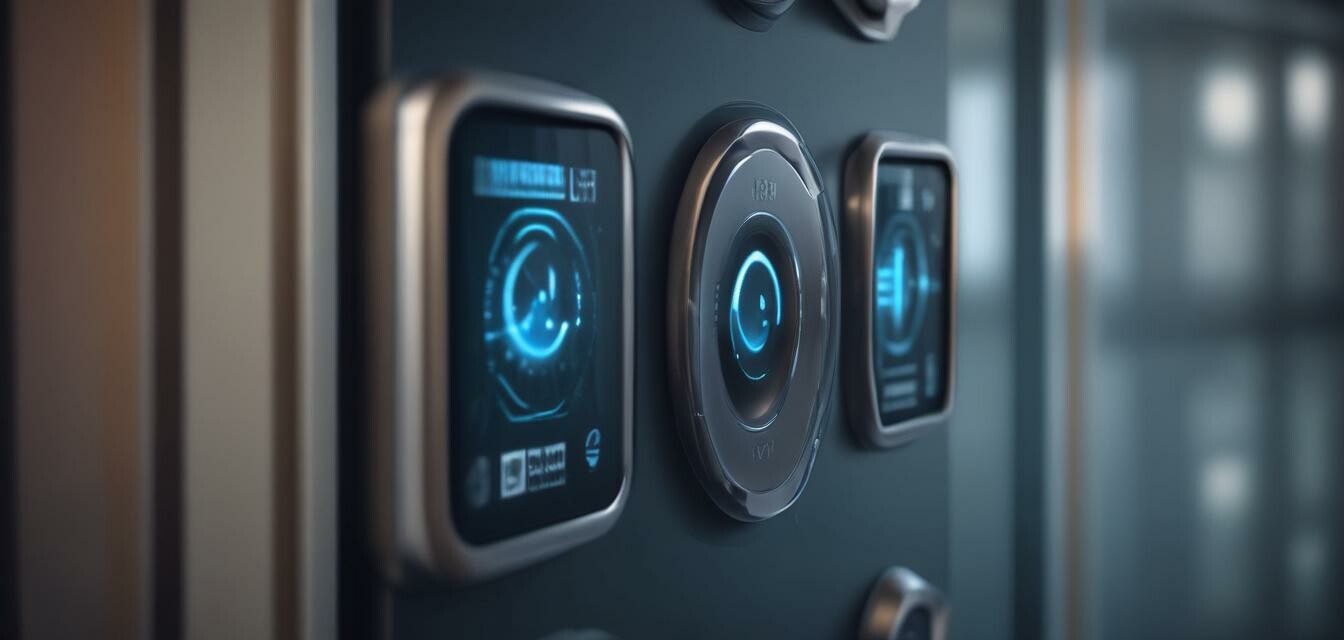
The evolution of smart locks in 2025
Key Takeaways
- Smart locks have advanced significantly, integrating AI and connectivity features.
- Expect more enhanced security with biometric and remote access technologies.
- Future smart locks will focus on user convenience and stronger compatibility with home automation systems.
- Regulatory changes could impact the design and implementation of smart lock technologies.
As we move into 2025, smart locks are expected to undergo further transformation, driven by advancements in technology and changing consumer expectations. These intelligent locking mechanisms not only offer convenience but also promise enhanced security features, making them an essential part of modern home security systems. This article explores how smart locks have evolved over the years and what innovations are on the horizon.
The journey of smart locks: A brief overview
Smart locks began to emerge in the early 2000s. Initially, they were simple Bluetooth-enabled devices that allowed users to unlock their doors through a smartphone app. Over the years, smart locks have incorporated various technologies, such as:
- Keyless entry systems
- Remote monitoring and control
- Integration with home automation systems
- Biometric access features
Advancements in technology
With each passing year, smart locks have continued to improve, reflecting broader trends in technology. By 2025, we can expect to see several key advancements:
| Feature | Description |
|---|---|
| AI Integration | Smart locks will use AI to learn user behavior, optimizing the locking and unlocking process. |
| Biometric Access | Fingerprints, facial recognition, and other biometric data will be utilized for enhanced security. |
| Remote Access | Users will be able to control their locks from anywhere in the world through mobile apps or web platforms. |
| Seamless Integration | Smart locks will connect better with existing home automation systems for a cohesive smart home experience. |
Security enhancements to consider in 2025
As security threats evolve, so too do the measures put in place to combat them. Here are some anticipated security features for smart locks in 2025:
- Advanced Encryption: More robust encryption methods will be implemented to protect user data.
- Tamper Alerts: Real-time notifications will alert users if tampering is detected.
- Dual Authentication: Enhanced security through two-factor authentication, combining physical and digital access.
Regulatory considerations
As the market for smart locks grows, regulations are likely to adapt. Consumers can expect:
- A focus on data protection and privacy.
- Standards for interoperability among different smart lock brands.
- Guidance on secure installation practices for homeowners.
Future trends in the smart lock market
As we look forward to 2025 and beyond, several trends will shape the smart lock landscape:
- **Increased adoption of DIY smart lock systems:** Homeowners may prefer installing and controlling their own smart locks without the need for professional services.
- **Integration with locksmith services:** Enhanced partnerships that allow for immediate lock reset and management in case of theft.
- **Focus on sustainability:** More manufacturers may prioritize eco-friendly materials and energy-efficient designs.
Comparison of smart lock technologies
When evaluating smart locks, understanding the different technologies can be crucial for making an informed choice. Here is a simplified comparison of common smart lock technologies:
| Technology | Pros | Cons |
|---|---|---|
| Bluetooth | Easy to use; works with smartphones | Range limitations; dependent on device compatibility |
| Wi-Fi | Remote access over the internet | Higher energy consumption; slower response times |
| Z-Wave | Energy-efficient, good for automation | Requires a hub for setup; limited range |
Conclusion
As we approach 2025, the evolution of smart locks is a testament to the rapid advancements in security technology. By understanding current trends and features, homeowners can make informed decisions that fit their needs. Smart locks with AI integrations, enhanced biometric systems, and improved connectivity promise a secure future for our homes. For further reading on smart technology, make sure to check our News & Trends category.
Pros
- Convenience of keyless entry
- Enhanced security features
- Improved user experience through technology advancement
Cons
- Potential vulnerabilities with hacking
- Dependence on power or battery
Tips for choosing the right smart lock
- Assess compatibility with your existing home system.
- Look for user-friendly interfaces in apps.
- Consider the installation process and setup time.
- Check reviews for durability and customer support.
